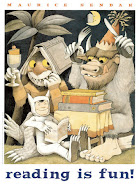This poem is by Margaret Stanley-Wrench, the last third in particular is lovely.
Hinterland
I like the backs of houses. Fronts are smug,
Stiff and formal, masks which smile at neighbours.
These roofs, shrugging, relaxed, these sun-warmed bricks,
Smooth, rounded bays, they are like lovers in bed
At ease, knowing and known. Cats stalk here.
The wagging lines of washing wave, the knops
Of hollyhocks knock and stroke the walls. A sunflower
Rises, bearded god with a black face.
And the swarthy, smiling, grape-bloomed neighbours stand
Amazed between the vines, the flower, the walls,
Themselves placid yet savage deities
Of these long gardens, of these hinterlands,
Green, warm and secret territory here
Like love behind the streets' correct facade.
Love, fierce and unexpected, sharp, uneven,
Sun and flower, the darkness and the sap
Surging through leaf and body, the quick flashed
Recognition of opened windows, white
Glances meeting, and doors, open wide.
There is another short poem by her here.
Otherwise I have mostly been re-reading - Flowers for the Judge (1953)by Margery Allingham, one of her charming light reads; The Corinthian (1940) by Georgette Heyer, not one of her best but with some funny moments and the usual amusing conversations; and The Gorgon in the Cupboard (2004), an excellent short story by Patricia McKillip, who is one of my favourite authors. This is one of the stories inspired by the Pre-Raphelite artists set (Victorian era), which all have women trying to live a human life in the confines of their society. We all need to live within the bounds of our society, but some times and some people seem to chafe more than others.
















































